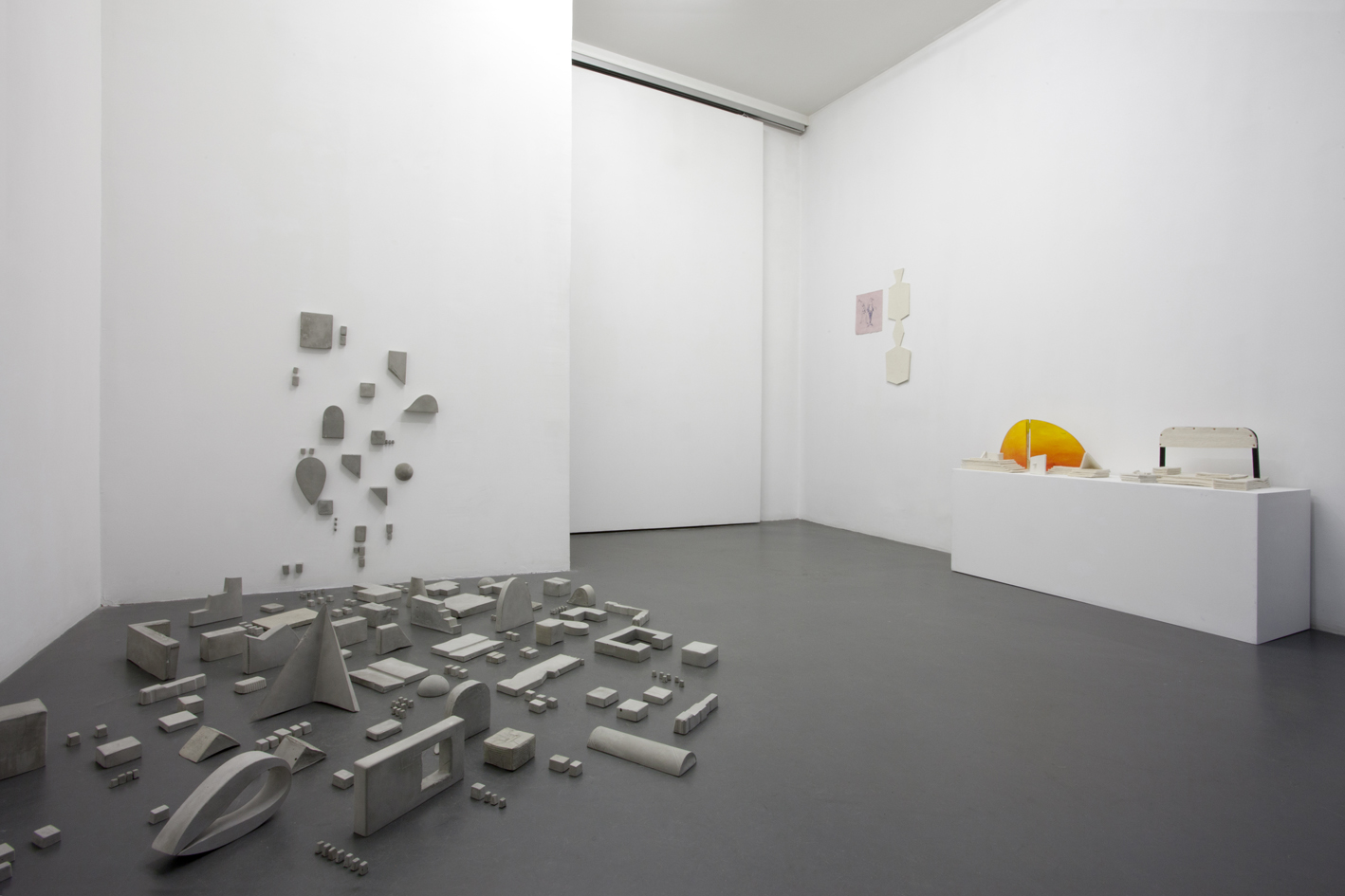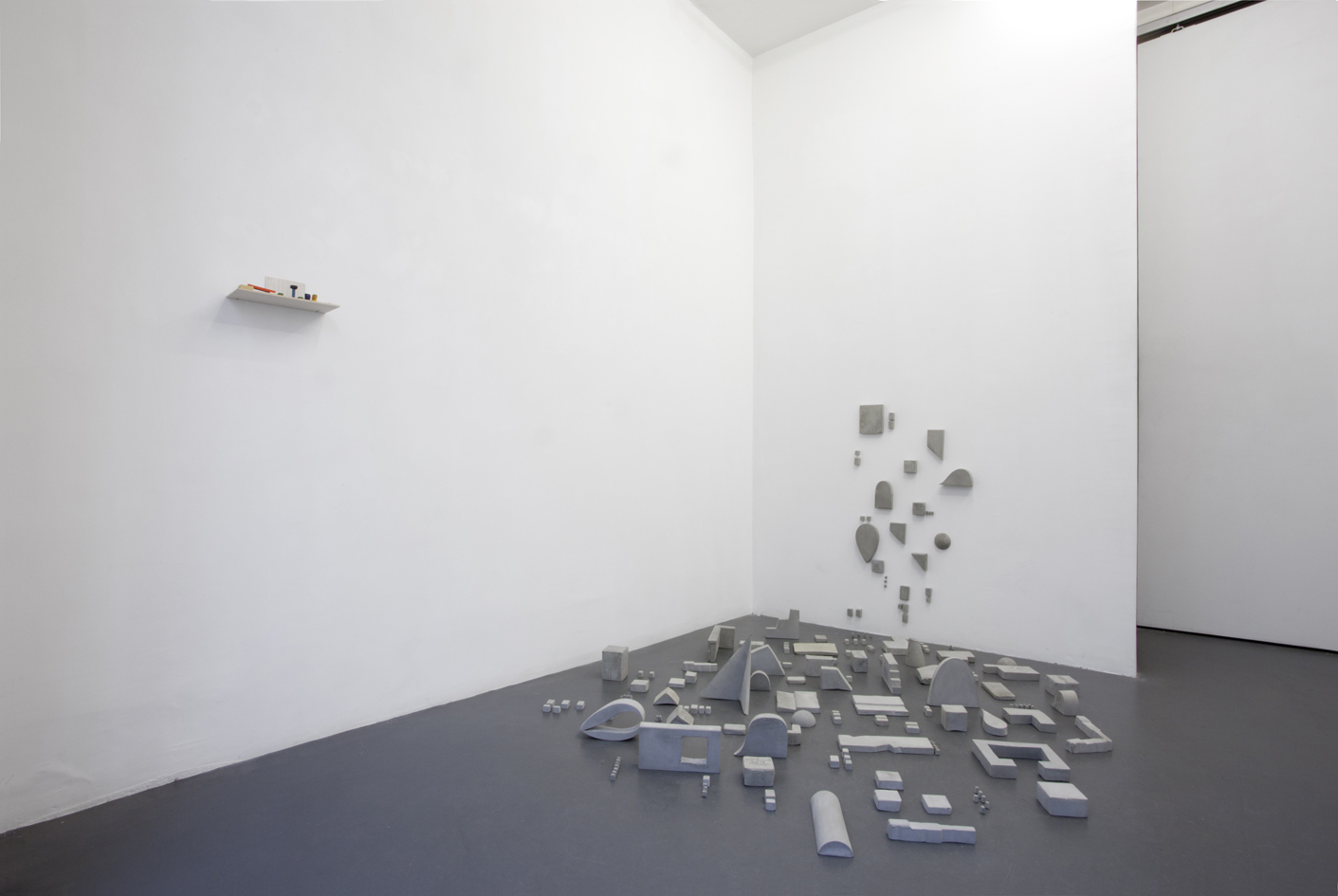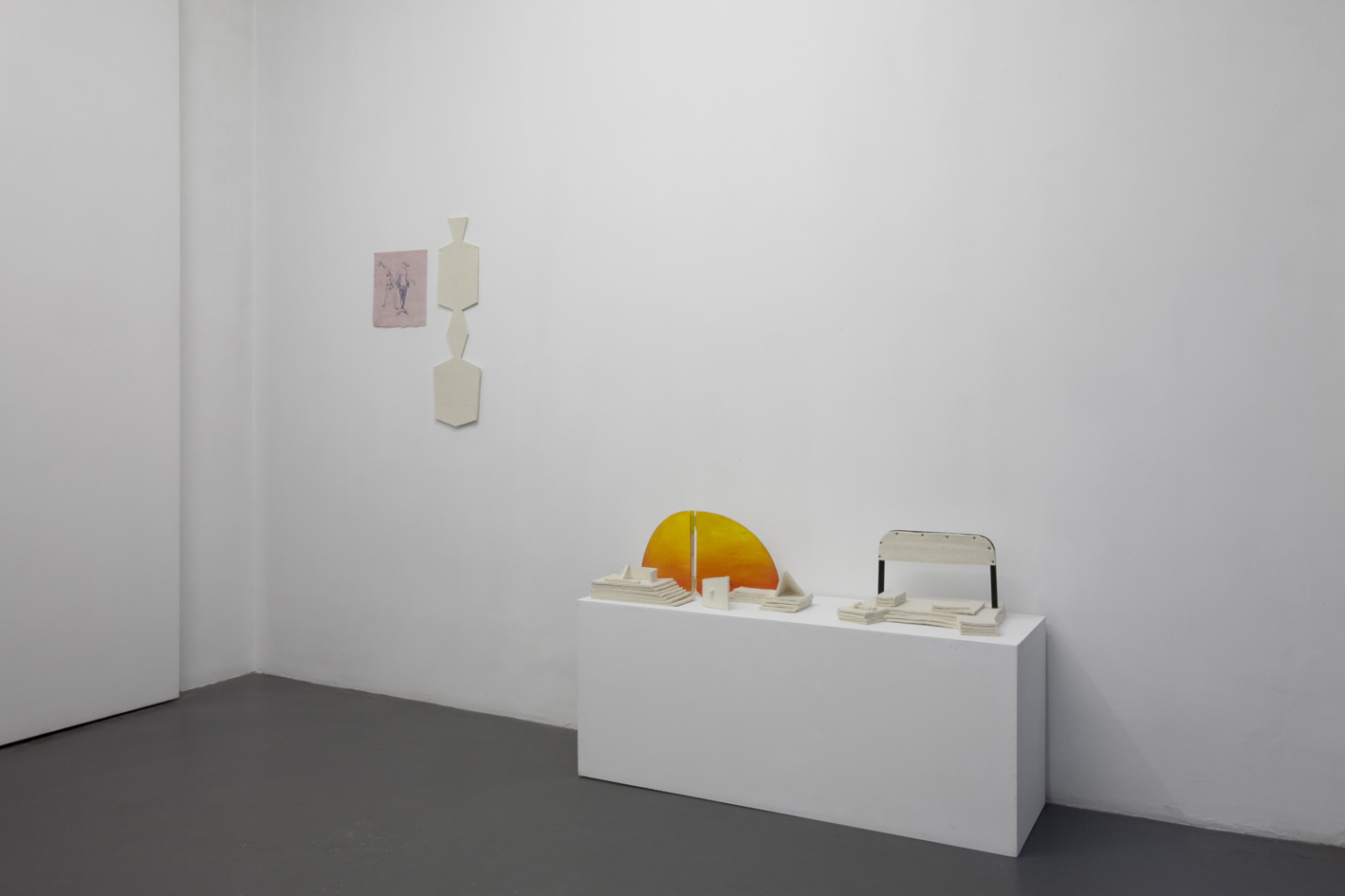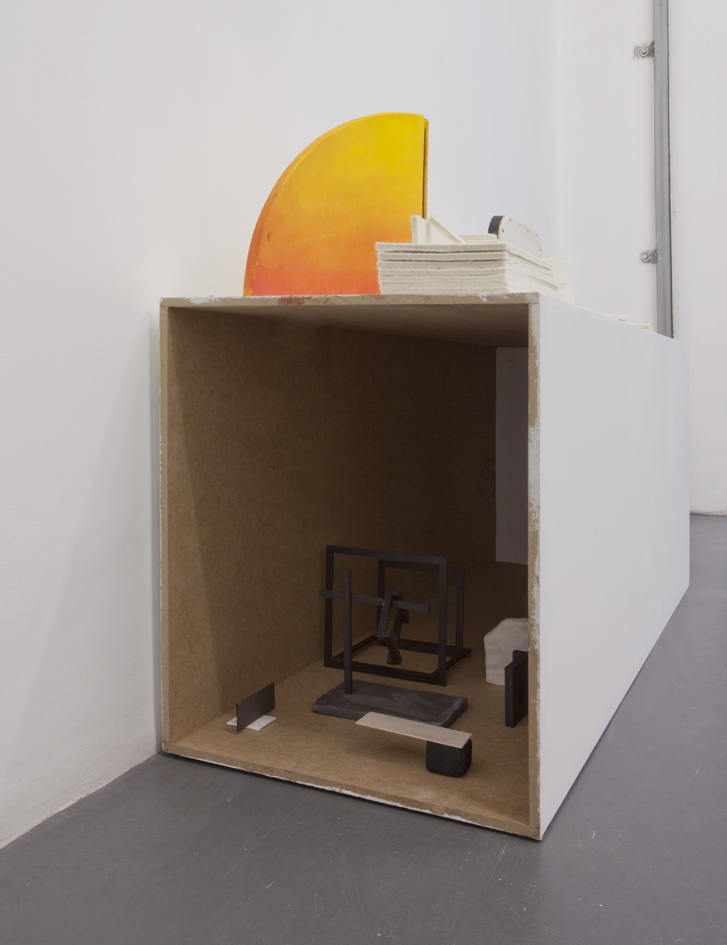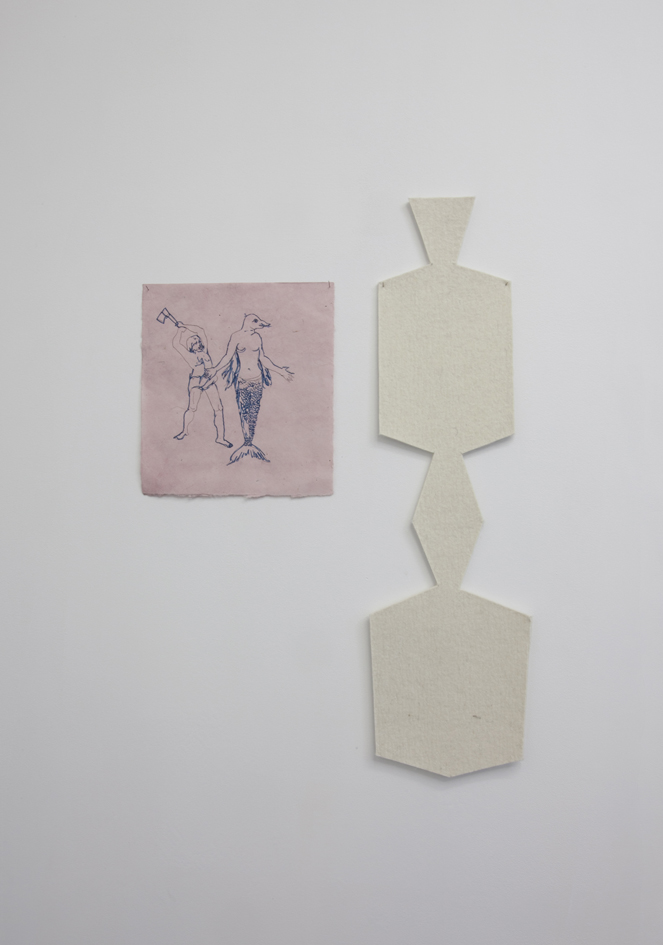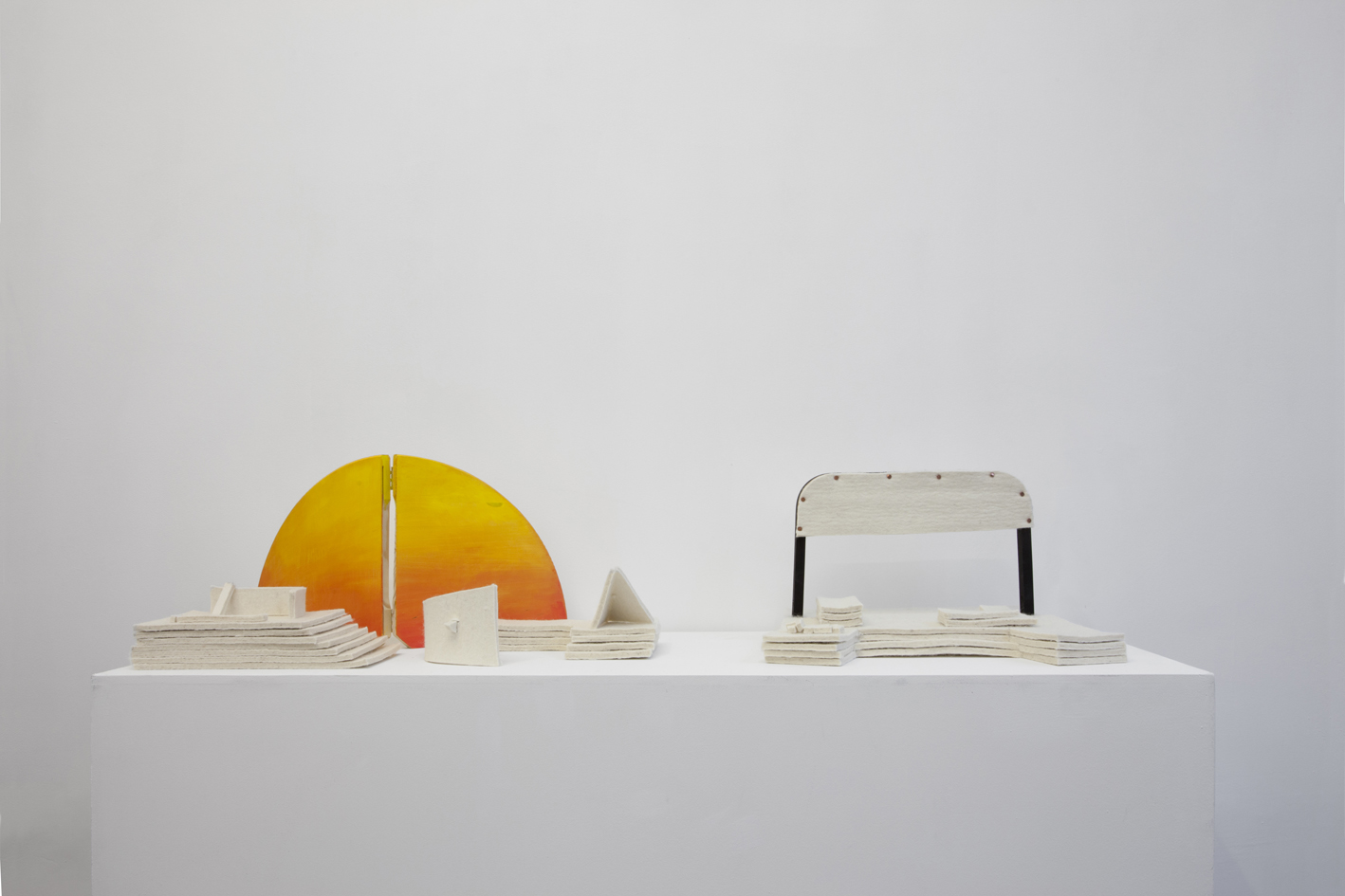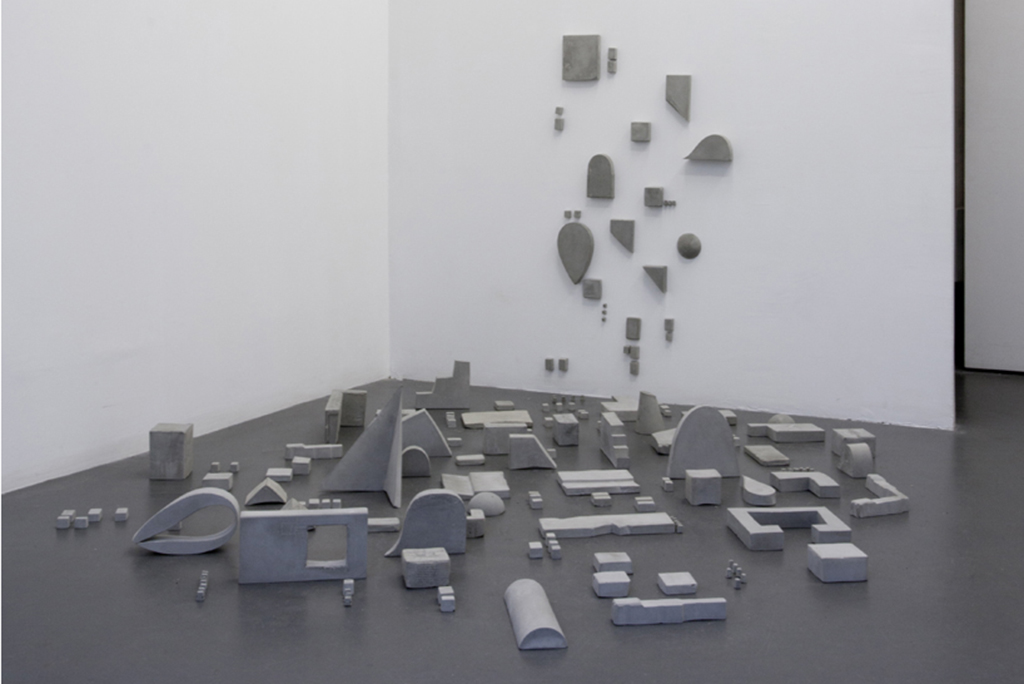Presentation :
And we, we walk unknown, Ana Mazzei
January is the month of new beginnings: after two seasons spent in residence in Paris and on her way back to Sao Paulo, Ana Mazzei will once again pull a thread between the old continent and the new world. In terms of school agenda, Ana was on the verge of a Parisian settlement, but the months spent here actually relate to the lunar calendar, typical of nomadic societies.
Thus, logically, Ana is leaving.
Out of this new fare, she entrusts us with a few elements restored here for her first exhibition at Galerie Emmanuel Hervé.
Despite an anthropophagic heritage that weaves ancient threads between our continents, Ana shows us that our stories are in search for new horizons, reminding us of a tale that is now history, the tale of a man, a French man, who in other times, never returned from his journey to Brazil.
“These barbaric people walk naked, and we, we walk unknown.”
With this excerpt from a book by Jean Thévet (1), Ana sets the tone of this exhibition.
Captured by the Indians, Jean was sentenced to death eight months after having been made prisoner. During that period, a Tupinamba woman initiated him to indigenous culture.
A German soldier and adventurer, Hans Staden, as well the travel logs of André Thévet and Jean de Lery, tell this founding myth for the Brazilian nation. It was then taken up again in 1971 by Brazilian director Nelson Pereira dos Santos in his movie “Qu'il était bon mon petit français”.
It is at this junction that Ana created an articulation between the mythological reference and her formal repertory.
Here are landscapes through which each one is invited to project oneself, offering a possible space for common perspectives. With a neo-concrete cultural bearing, these assembled collections play with a universal symbolic that, from the Southern hemisphere to the Northern hemisphere, are hitched to a territory of understanding, to the point where it is the proper shape of the materials that would come to determine their purposes.
Estelle Nabeyrat
Et nous, nous marchons inconnus, Ana Mazzei
Les mois de janvier sont ceux des nouveaux départs et, du haut de ces 2 saisons passées en résidence à Paris, retournant à São Paulo,
Ana Mazzei, tirera de nouveau un fil entre le vieux continent et le nouveau Monde. Si l’on tient compte du calendrier solaire, Ana
aurait touché la limite d’une sédentarisation parisienne, mais les mois passés ici renvoient plutôt au calendrier lunaire qui caractérise
les sociétés nomades.
En toute logique donc, Ana s’en va.
De ces nouvelles nourritures terrestres, elle nous confie quelques éléments ici restitués pour sa première exposition à la galerie
Emmanuel Hervé.
Malgré l’héritage anthropophage qui tisse les liens précédents entre nos continents, Ana nous montre que nos histoires cherchent de
nouveaux horizons d’attente en nous rappelant à un conte devenu historique, celui d’un homme, un français, qui, d’un autre temps,
ne revint jamais de son voyage au Brésil.
“Ces barbares marchent tous nus, et nous, nous marchons inconnus”, à partir de cet extrait tiré de l’ouvrage de Jean Thévet, (1) Ana
donne le ton à cette exposition.
Capturé par des indiens, Jean, fut condamné à mort 8 mois après avoir été fait prisonnier. Et pendant cette période, il fut initié à la
culture indigène par une femme Tupinamba.
Ce mythe fondateur pour la nation brésilienne est rapporté par le soldat et aventurier allemand Hans Staden, ainsi que dans les récits
de voyages d’Andre Thévet et Jean de Lery. Il fut ensuite reprit en 1971 par le cinéaste brésilien Nelson Pereira dos Santos dans un
film intitulé “Qu’il était bon mon petit français”.
C’est à ce point de jonction qu’Ana créé une articulation entre la référence mythologique et le répertoire formel qu’elle propose.
Voilà des paysages à travers lesquels chacun est invité à se projeter et qui offrent un espace possible à des perspectives communes.
Bien qu’ayant une marque culturelle néo-concrète, les assemblages se jouent d’une symbolique universelle qui, de l’hémisphère
sud à l’hémisphère nord, s’accrochent ici sur un territoire d’entente, au point que ce sont la forme des matériaux eux-même qui
viendraient déterminer leurs objets.
Estelle Nabeyrat
(1) André Thevet, Les singularitez de la France Antarctique, autrement nommée Amérique, A Paris, chez les héritiers de Maurice de la Porte, au
Clos Bruneau, 1558


